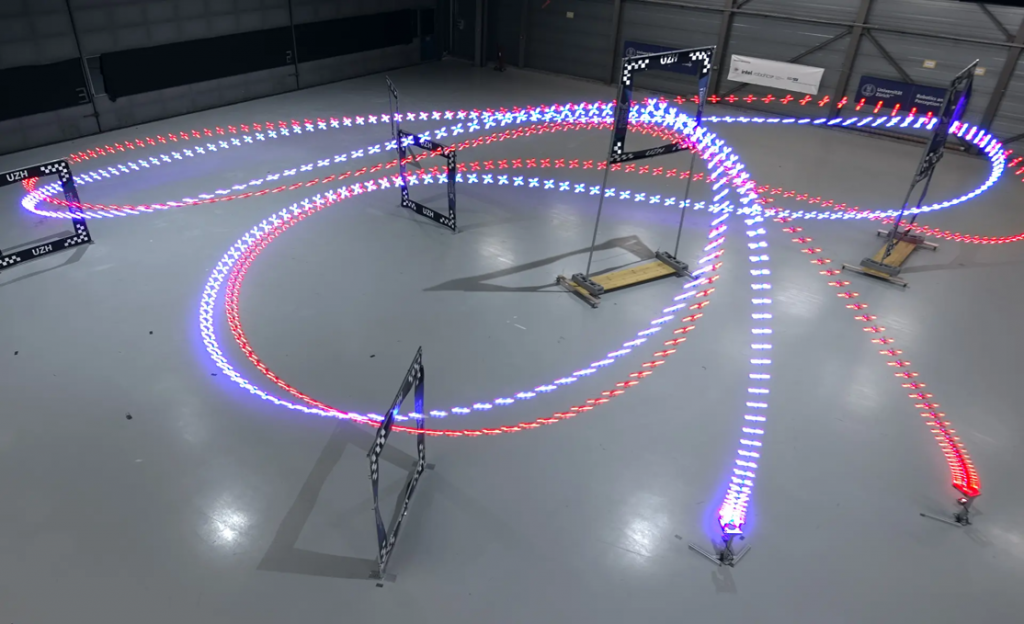Observing a high-level drone race from the immersive first-person view (FPV) perspective triggers a profound recognition of the sport’s challenges—a parallel to witnessing Formula One from a driver’s seat or experiencing onboard footage from the Isle of Man TT. The amalgamation of speed, precision, and the ability to dynamically control the aircraft leaves one in admiration of the human mind’s agility in swift calculations and real-time responses. It’s a remarkable showcase of human prowess.
Historically, Deep Blue’s mastery of chess and AlphaGo’s supremacy in Go historically exemplified AI’s brilliance within strategic contexts. These feats involved analyzing extensive datasets of past games and possible moves, granting computers a strategic edge.
However, a new era has arrived where AI transcends strategic domains to conquer a physical sport at its highest echelons. An AI entity dubbed Swift, a joint creation of the University of Zurich researchers and Intel, learned a complex 3D racetrack and surpassed two human world champions and a three-time Swiss national champion in head-to-head racing, even establishing a new record for the fastest race time.
Swift harnessed a single-camera vision setup similar to human pilots for navigation through gates. Yet, it harnessed real-time data from an onboard inertial measurement unit to gauge acceleration, speed, and orientation—a capability surpassing its human counterparts. The AI mastered the intricate seven-gate racetrack by simulating the flight of 100 drones within a virtual environment. This digital exploration metamorphosed into pathfinding and path optimization, resulting in the fastest racing line. This rapid process, taking less than an hour, effectively simulated a month’s real-time training.
Following this virtual training, Swift refined its control strategies utilizing real-world flight data, accommodating factors such as air turbulence and variations in visual signals, which introduce uncertainties between simulations and actual flight.
The pivotal moment of this technological saga unfolded on a specially designed 25 x 25-meter track situated within an airport hangar near Zurich. As the AI surged ahead, executing turns tighter than any human counterpart, seasoned drone racing champion Thomas Bitmatta couldn’t help but exclaim, “That was extraordinary.” Swift’s pace obliterated records, clocking laps half a second faster than the best human attempt—an impressive lead in high-speed racing.
Nevertheless, human adaptability proved superior in handling unforeseen variables. The AI faltered under intense sunlight, a scenario it wasn’t specifically trained for. While it’s plausible that further training could rectify such limitations, the truth remains: human intellect excels in adaptability, often relying on unconventional strategies and unforeseen tactics to outmaneuver any potential robotic dominance.
This victory underscores a more comprehensive truth concerning AI’s ascent. While these machines demonstrate remarkable speed and precision in specific tasks, the human intellect remains supreme in handling a broader spectrum of dynamic and evolving challenges.
Source: University of Zurich

